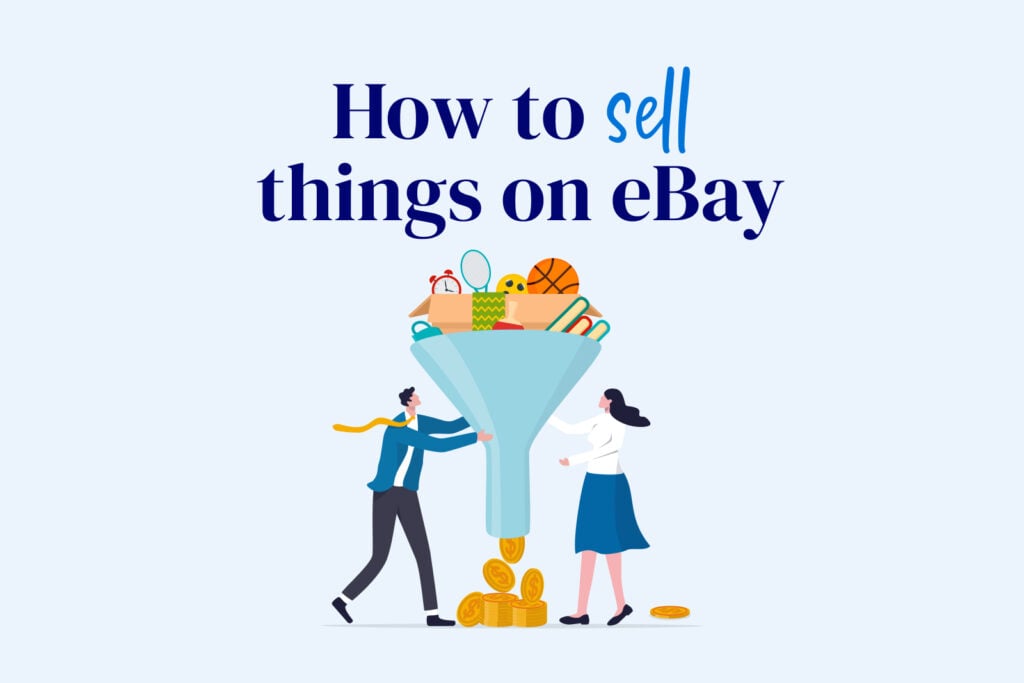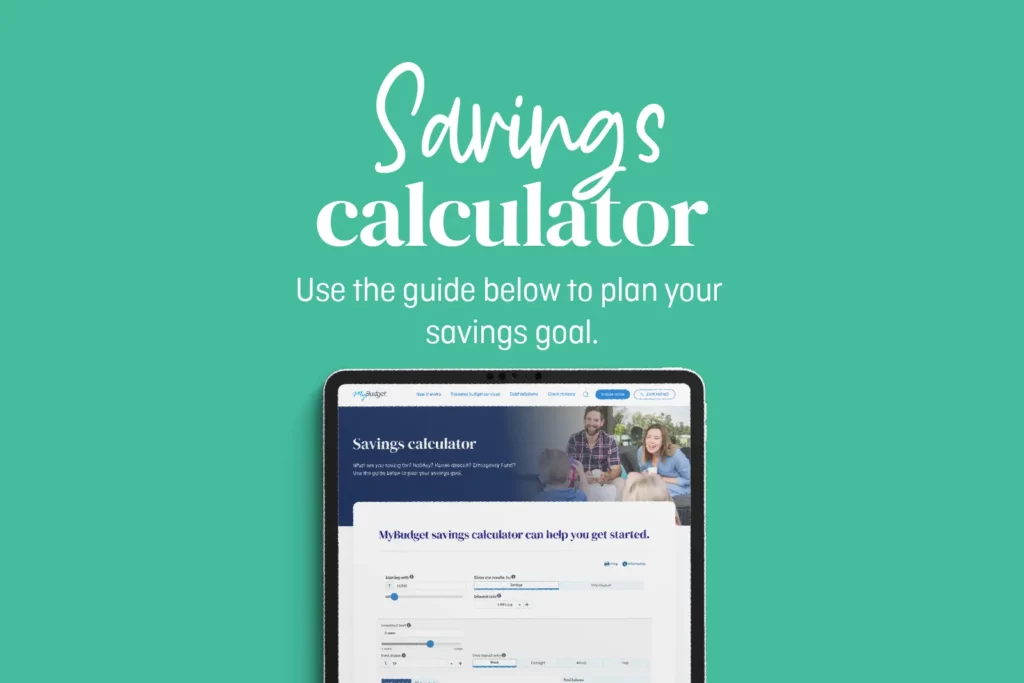Sitting on $7,000? Here’s how to sell your unused items on eBay
Did you know the average Aussie household is sitting on $7,000 worth of unused items at home? According to Statista’s last study, Aussies are collectively sitting on over $60 billion worth of second-hand stuff. More than 85% of us have unused gear gathering dust. That’s an emergency fund, a decent chunk off your credit card, or about 737 chaotic trips through the Bunnings plant section.
If the idea of selling on eBay feels a bit overwhelming; listing fees, postage, writing descriptions; don’t worry, it’s easier than you think, and we’ll walk you through exactly what to sell, how to price it, and how to turn your clutter into cold, hard cash (without the Saturday morning garage sale chaos).
Sell your unused items on eBay
I asked Adam, one of our MyBudget team legends, what he does with things he no longer uses:
I bought a backpack for a holiday and never used it. A year later, I listed it on eBay during a clear-out, and what I made helped cover some bills.
Adam, MyBudget staff member
So yes, that unused Nutribullet and the box of tech relics you’ve moved house with three times but haven’t touched since Julia Gillard was PM? They might just be your new side hustle. Whether you’re funding your next trip or just trying to clear the spare room (or floor-drobe), it’s time to turn your clutter into cash. We’ll show you what to list, how to price, and when to sell, plus a few lessons we learned the hard way.
And if you’re keen for more income ideas, check out our 25 Best Side Hustles in Australia to get inspired.
What can I sell on eBay?
Basically, anything that isn’t bolted to the floor. But especially:
- Vintage fashion items (hello, 90s band tees)
- Electronics (even the ‘it kinda works’ ones)
- Collectables (yes, those Beanie Babies might be worth something)
- Baby gear, tools, books, shoes.
Think about things your kids have outgrown, gadgets gathering dust, or that juicer you swore you’d use weekly. If you haven’t used it in a year (or forgot it even existed), it’s probably safe to list. These unwanted items could easily become best-selling items if you include quality images and clear product details.
How do I set up an eBay seller account?
Getting started as a seller on eBay is surprisingly easy, and free. Just head to the eBay dot menu and sign up for an account. You can pick a personal account (if you’re a casual seller just offloading a few things) or a business one if you plan on building an empire. Either way, you’ll need to:
- Verify your identity
- Add your bank account details to get paid
- Choose your payment method (eBay handles this for you now).
eBay uses Managed Payments, so no PayPal dramas. Just add your valid payment method during setup, and you’ll get paid directly after each sale.
How to set up your eBay seller profile
Next, create your eBay seller profile. This is your shopfront, so make it friendly and clear. Upload a profile pic, write a short blurb, and set your shipping and returns policies. If you’re planning to sell regularly, explore eBay Store subscription options, they come with perks like discounted seller fees and more active listings per month.
eBay’s guidelines for selling
Also, eBay has policies (of course it does). As one of the world’s biggest online marketplaces, they want things running smoothly. You’ll need to follow eBay’s product listing guidelines, post items accurately using a list of item specifics, and respond to potential buyers promptly. It’s all about building a positive seller reputation and avoiding those dreaded one-star reviews.
Once you’re in, you’re ready to list individual items for sale! Pop into the Seller Hub to track your sales proceeds, manage listings, and check your feedback score. Think of it like your eBay dashboard, less glitter than Etsy, more cha-ching.

How do I list an item on eBay?
First impressions matter, even for your old blender. A standout eBay listing needs quality images, a clear item description, and accurate details. It’s as easy as:
- Snapping some great photos (natural light, no mystery shadows, no toes in frame please)
- Writing a product title with keywords people might search (e.g. “Nike Air Max Women’s Size 8”)
- Describing your item honestly, including condition and any flaws
- Setting your starting price and shipping cost (flat rate is easier unless you love maths)
- Hitting ‘List’ using the basic listing tool and waiting for the cha-chings!
How do I write a good eBay item title?
Your title is what gets eyeballs on your listing, so make it keyword-friendly and scroll-stopping.
Skip the fluff and go for the facts: brand, size, condition, and what the thing actually is. Think “Nike Air Max 270 Women’s Size 8 – Barely Worn” rather than “Cool Shoes!!” (which… no one is searching for in the search bar).
Here are a few solid examples:
- “Dyson V7 Cordless Vacuum – Great Condition + Accessories”
- “Zara Black Linen Blend Blazer Size M – Worn Twice”
- “LEGO Star Wars Millennium Falcon Set 75105 – Complete with Box”.
Basically, if someone typed those words into a search engine or the eBay search bar, your listing would show up. That’s the goal. Keep it snappy, searchable, and relevant.
How do I describe an item on eBay?
Buyers want the details, what it is, the condition, the size, and any flaws (yes, that scuff mark counts). Be honest, be clear, and don’t waffle. Bullet points are your friend for a user-friendly experience.
Example:
- Brand: Dyson
- Model: V7 Animal
- Condition: Used, works perfectly, a few scratches on wand
- Comes with: Charger, 2 attachments.
Use relevant keywords, include product identifiers, and answer questions before they’re asked. You’re creating a perfect listing, not writing a novel.
Should I auction or fixed price?
Auction-style listings are great for rare or collectable items, if there’s buzz, you’ll benefit. Fixed-price listings are better if you just want it sold, preferably yesterday.
If you’re unsure, try auction listings with a reserve or list it at a competitive sale price with “Make an Offer” enabled.
What are eBay listing fees?
Selling on eBay isn’t totally free, but it’s pretty affordable when you understand the fees involved in using a marketplace platform. Here’s the breakdown:
- A small listing fee (after your first 250 items per month)
- Final value fee (a percentage of the sale + shipping cost)
- Optional Promoted Listings to boost visibility on online marketplaces.
So how much does it cost to sell on eBay?
It depends on what you’re selling, but it’s easy to figure out. Use the eBay fee calculator to estimate your costs, including the listing fee and final value fee.
And don’t forget: packaging and postage costs can nibble away at your profit like a seagull on hot chips, so factor those in too.
Want to see what your eBay side hustle could add up to? Use MyBudget’s free Savings Calculator to work out how much you could save (or spend wisely) once you start selling your stuff.

What shipping options can I offer?
Shipping can feel like the boring admin bit, but it’s essential for a smooth process. Here’s how to make it work:
Choose your postage option: you can set a flat rate, offer free shipping (buyers love it), or use eBay’s calculator to estimate shipping cost based on item size and weight
Calculate costs: use eBay Labels or Australia Post tools. Factor in packaging, postage labels, and your time
Print and post: once it sells, print a shipping label straight from your Payments tab, stick it on, and off it goes
Sending it internationally? Choose from international services or join the Global Shipping Program, eBay sorts out customs and delivery options.
How do I set up payment methods?
eBay handles payments for you, so no PayPal dramas. Just add your bank details when you set up your account, and you’ll get paid directly once your item sells. Easy.
Heads-up: eBay does take a small cut (yep, fees again), and if you’re running a store or using third-party tools, check they all play nicely together.
What are the risks of selling on eBay?
It’s not all cha-chings and five star reviews. Sometimes a parcel goes missing, fees pop up unexpectedly, or Karen from the Gold Coast leaves a two-star review because Australia Post took a day longer than expected.
But with honest listings, fair prices, and decent communication, you’ll avoid most of the headaches.
Always:
- Reply politely (even if they’re being a little bit extra)
- Be clear in your descriptions
- Resolve issues where you can, your rating depends on it.
If it gets messy, eBay has protections for both sellers and buyers. Use this if needed.
Seller ratings matter, they affect how buyers view you and whether they hit that ‘Buy Now’ button. So keep communication clear, fix issues fast, and don’t let one moody review ruin your vibe.
TL;DR: here’s your eBay cheat sheet
- List your clutter, someone out there wants your pre-loved juicer
- Use quality images and accurate details
- Price it competitively with clear delivery options
- Ship fast, stay friendly, and follow eBay policies.
And if you’re doing this because money’s tight? We totally get it.
At MyBudget, we’ve helped over 130,000 Aussies take control of their finances, pay off debt, build savings, and live life without the constant financial stress. Whether you’re listing your first few items or turning eBay into a full-blown side hustle, we’ll help you make every dollar count.
Need help budgeting your eBay profits?
So you’ve made a few sales, amazing! Now imagine what that extra money could do.
✅ Pay off a credit card
✅ Start an emergency fund
✅ Create savings for school fees, a holiday, or something big.
Whatever your goals, a solid personal budget can make sure every dollar you earn is working harder for you.
Enquire online today or give us a call on 1300 300 922 for a quick 10-minute chat.
